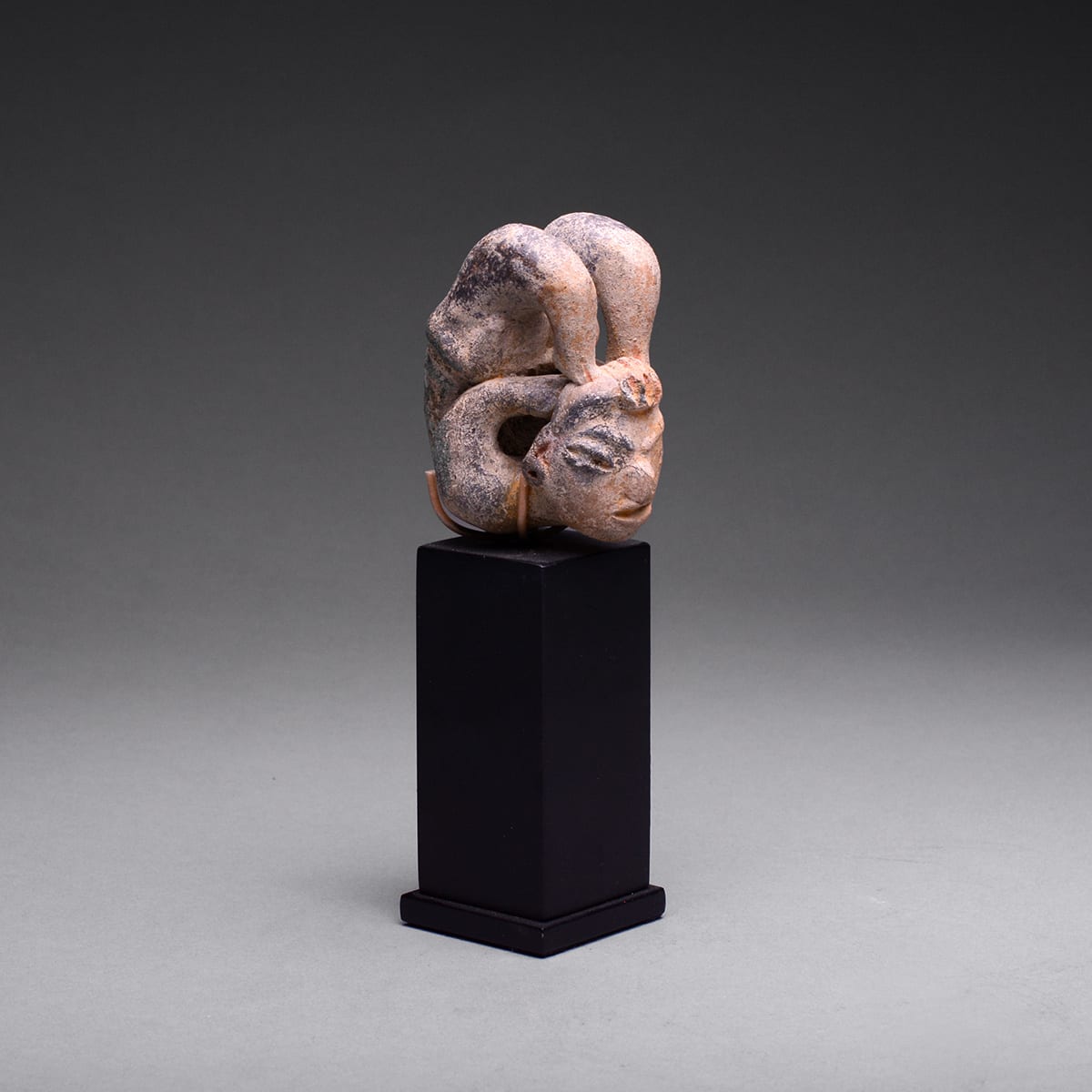Tlatilco Sculpture of an Acrobat, 900 BCE - 500 CE
Terracotta
height 7 cm
height 2 3/4 in
height 2 3/4 in
PF.4985
Further images
The ancient site of Tlantilco in the valley of Mexico came to light in 1936, during excavations carried out by brick workers digging for clay. While removing the clay in...
The ancient site of Tlantilco in the valley of Mexico came to light in 1936, during excavations carried out by brick workers digging for clay. While removing the clay in order to make bricks, these workmen discovered a large number of burials, in which were placed delicately modeled figurines, such as this remarkable example. Later excavations in the area, performed by archaeologists, revealed that these burials formed a portion of a very large village, Tlatilco, located west of the Great Lake on a small stream, and settled by about 1200 B.C. The figurines that appear in these ancient burials reveal that they are the most aesthetically satisfying in Ancient Mexico.
Depiction of acrobats in clay has a long tradition in Mexican art. The figures are usually quite small, as in the case of this delightful example, and often possess considerable charm. Certainly, the Mesoamericans were renowned for their elaborate festivals that included musicians, dancers and acrobats. There is no doubt the latter group were capable of extraordinary physical contortions; as with this fellow, twisting his body into a near perfect circle so his feet rest comfortably either side of his head. His hands too curl upwards with amazing agility just below the feet. Mexican artists practiced considerable realism, not allowing much abstraction to influence their art. The face on this acrobat is very expressive with a long, hooked nose, almond eyes, slightly parted mouth, and earspools. His expression is of complete calm and relaxation in the manner of Indian contortionists. From whatever angle this figure is viewed he radiates a sense of joy, and is a vivid reminder of the more festive aspect of Mesoamerican life.
Depiction of acrobats in clay has a long tradition in Mexican art. The figures are usually quite small, as in the case of this delightful example, and often possess considerable charm. Certainly, the Mesoamericans were renowned for their elaborate festivals that included musicians, dancers and acrobats. There is no doubt the latter group were capable of extraordinary physical contortions; as with this fellow, twisting his body into a near perfect circle so his feet rest comfortably either side of his head. His hands too curl upwards with amazing agility just below the feet. Mexican artists practiced considerable realism, not allowing much abstraction to influence their art. The face on this acrobat is very expressive with a long, hooked nose, almond eyes, slightly parted mouth, and earspools. His expression is of complete calm and relaxation in the manner of Indian contortionists. From whatever angle this figure is viewed he radiates a sense of joy, and is a vivid reminder of the more festive aspect of Mesoamerican life.







